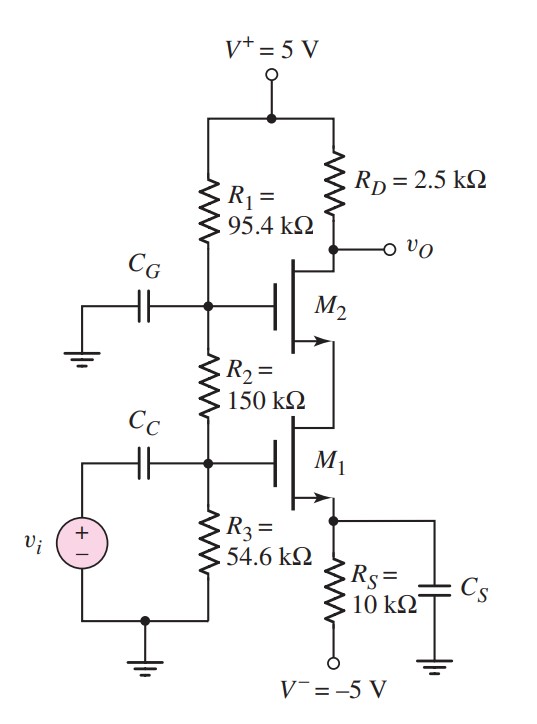D4.72 For the cascode circuit in Figure 4.51 in the text, the transistor parameters are: VTN1 = VTN2 = 1 V, Kn1 = Kn2 = 2 mA/V2 , and lambda1 = lambda2 = 0. (a) Let RS = 1.2 kohm and R1 + R2 + R3 = 500 kohm. Design the circuit such that IDQ = 3 mA and VDSQ1 = VDSQ2 = 2.5 V. (b) Determine the small-signal voltage gain Av = vo/vi.




You'll get a detailed, step-by-step and expert verified solution.
 Work With Experts to Reach at Correct Answers
Work With Experts to Reach at Correct Answers